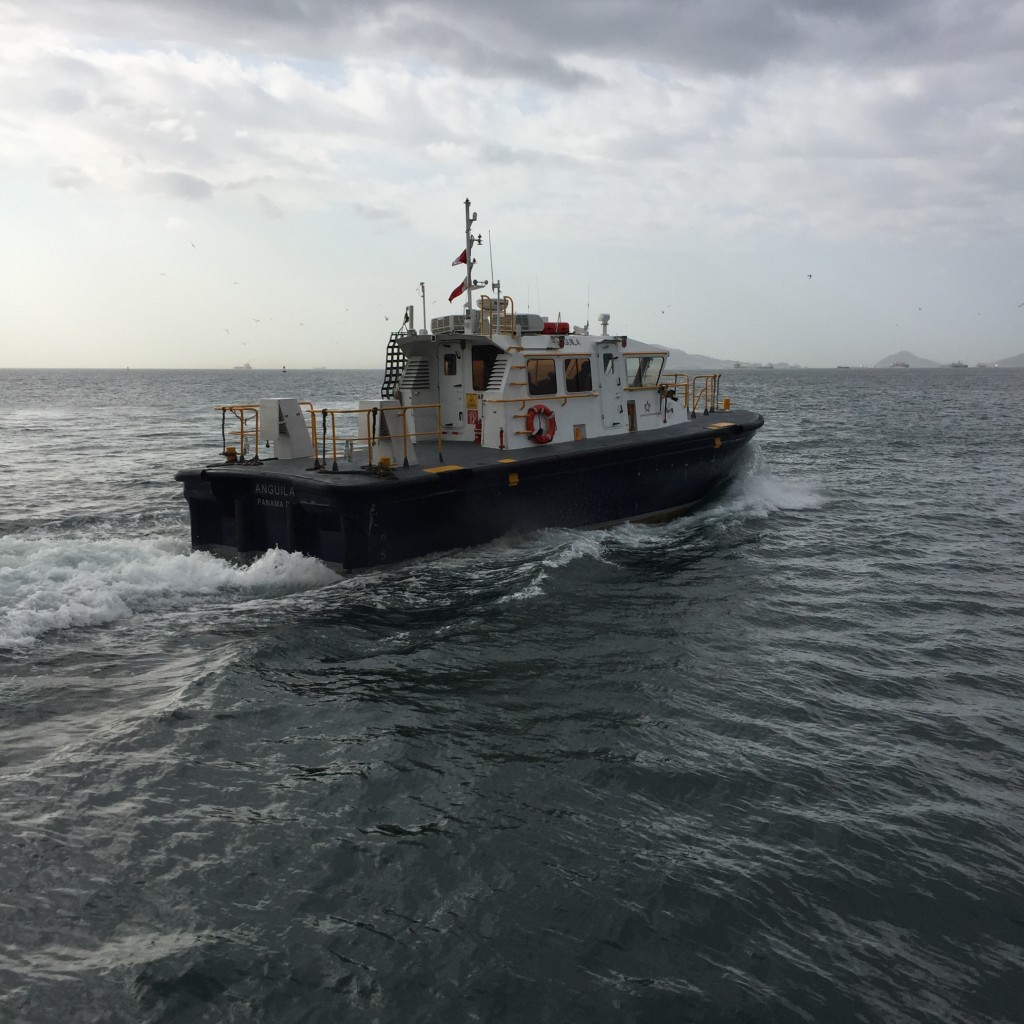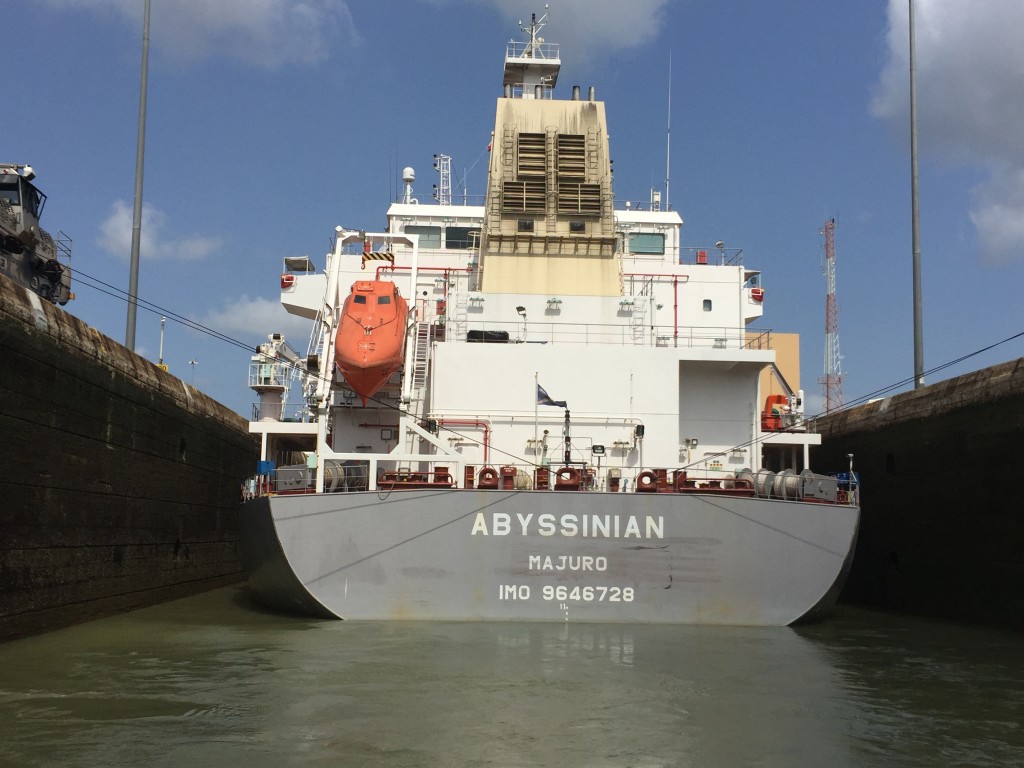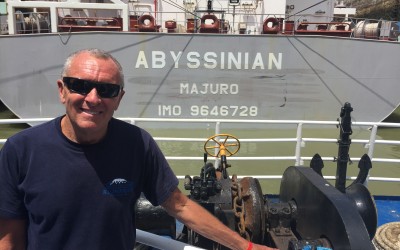
Canal captain arrives.
Hey, I like relaxing on a warm beach as much as the next guy. I really enjoy checking out restaurants in the various countries I visit. And I did both of those things on a recent trip to Panama with a group of listeners. But I must admit that the highlight of the trip was a day long boat ride into the Panama Canal. I had no idea of the challenges faced, and the obstacles overcome, to build one of only two manmade structures so significant that it can be viewed from outer space (the other is the Great Wall of China). The day began when we arrived at the boat harbor in Panama City, boarded a tourist boat that held about 150 people. We moved into the lane where the ships and boats queue up for their turn to enter the canal. There we waited for a canal captain to come aboard. All ship captains of big, little, commercial or military vessels, have to relinquish their command to a certified person who will navigate their craft into, and through, the canal.
We were paired up with a gigantic freighter, the Abyssinian from Majuro in the Marshall Islands, which we followed, very slowly, under the Bridge of the Americas and into the locks. The gates were closed, and fresh water began to flow into the first lock. Both craft were raised 27 feet. The gates opened and we proceeded to the second lock. Raised another 27 feet. Finally a third, 31 feet this time, to total 85 feet, or the equivalent of about eight and a half stories. From there we proceeded into a huge fresh water lake, a lake large enough to allow vessels of all sizes to pass as they negotiate the canal from east to west or vice versa.

Pulling into the lock.
It may sound easy. It may sound like a process that can be completed quickly. But it takes each vessel approximately eight hours to negotiate the entire canal. The large cruise ships and freighters have less than twelve inches of clearance on each side in each lock. While we had some “dead” time on the boat, that is part of the enjoyment. You get to see the engineering marvel that is the canal. Started by the French in the 19th Century, abandoned and then completed by the United States in 1914, the construction of the canal claimed almost thirty thousand lives, from heat, exhaustion, malaria and other diseases.
There is so much more that can’t be covered in a quick blog. The amount of earth that had to be dug out and moved. The incredible cost that each vessel must pay to use the canal, and the huge expansion project that is currently underway. But perhaps this has stimulated you to do a little reading, a little research, on the Panama Canal. I’m sure it will awe you as much as it did me.

